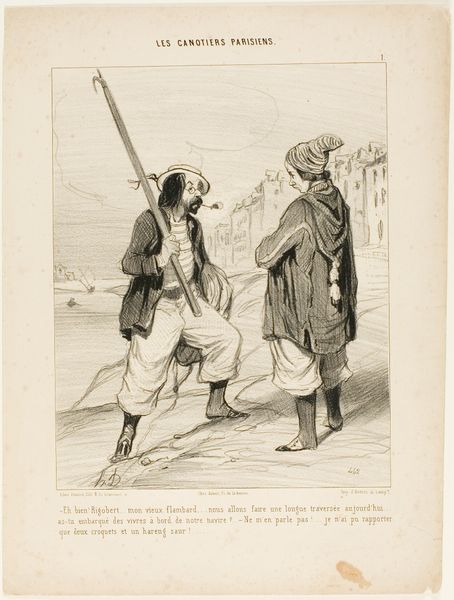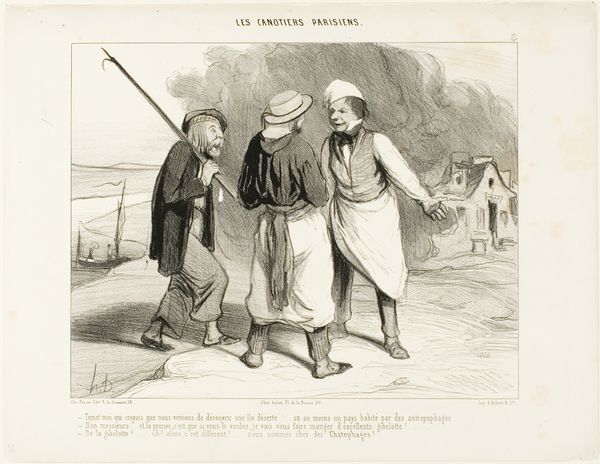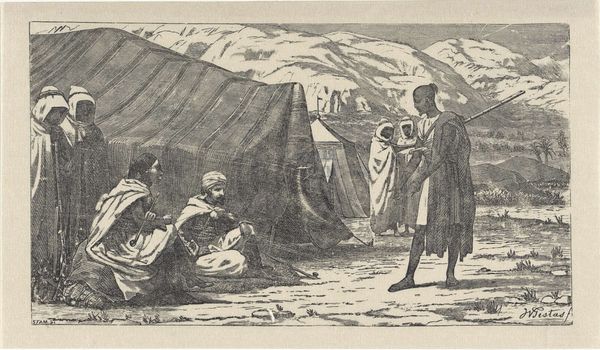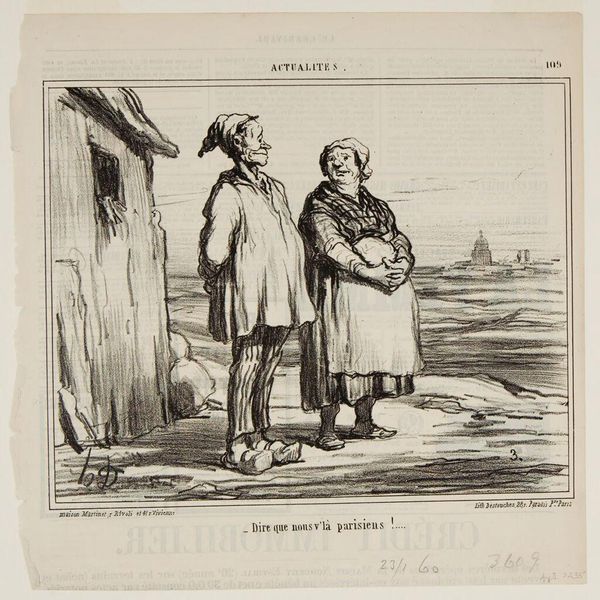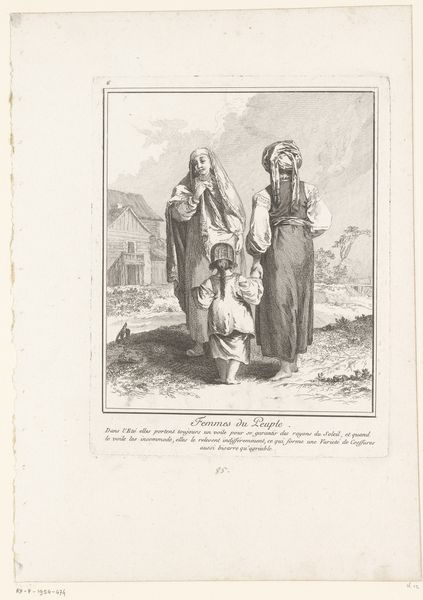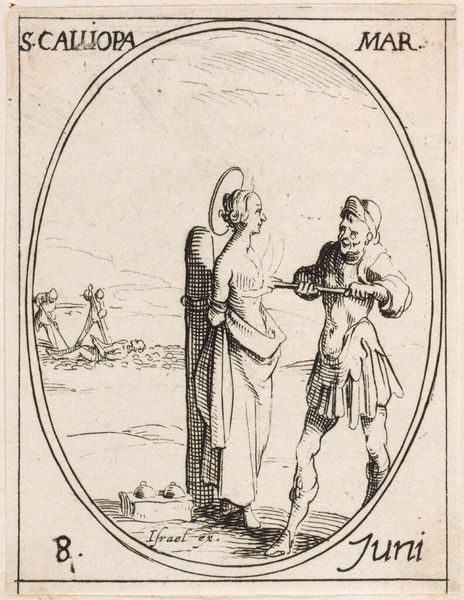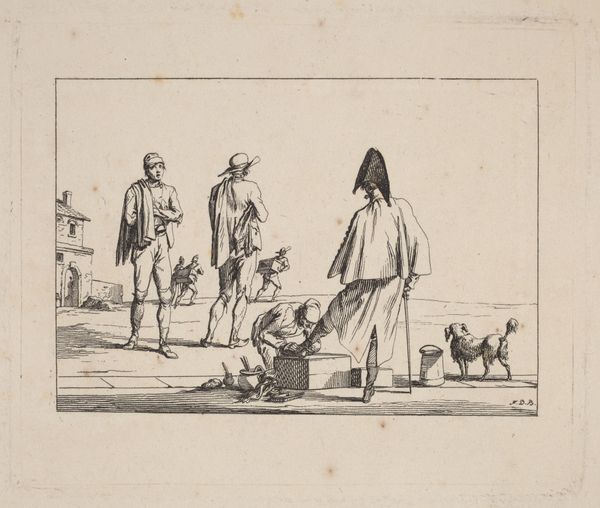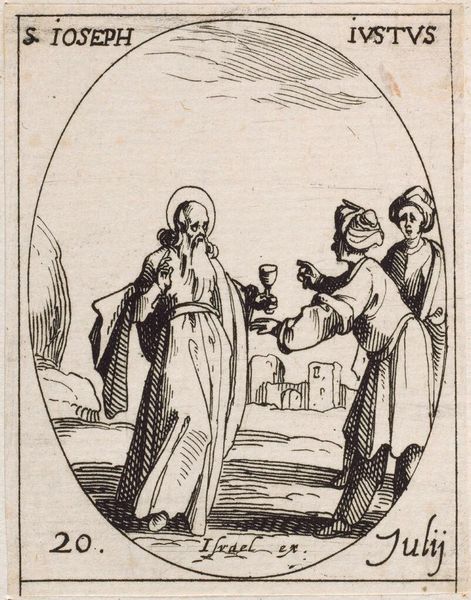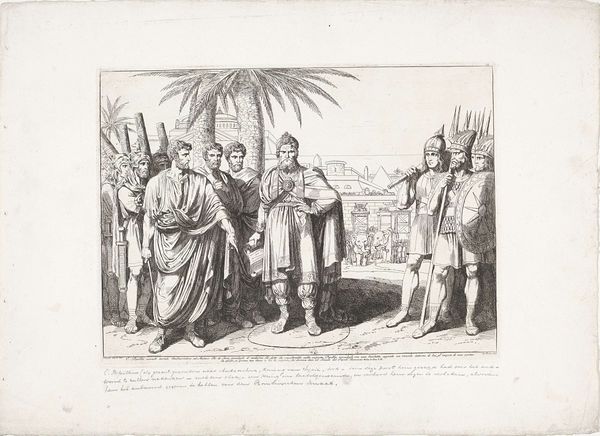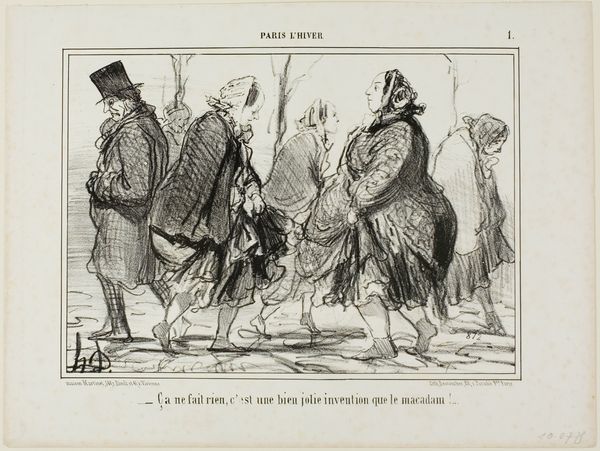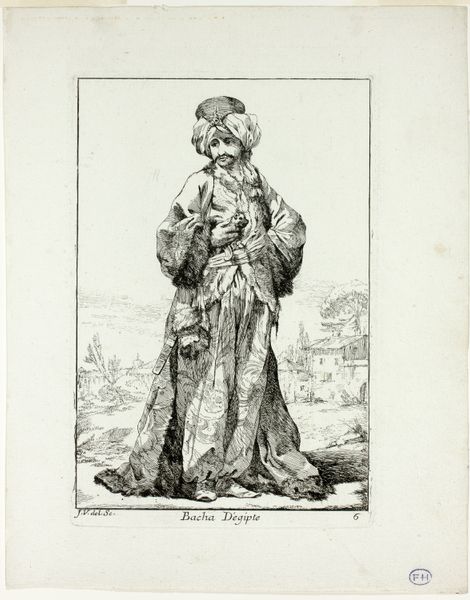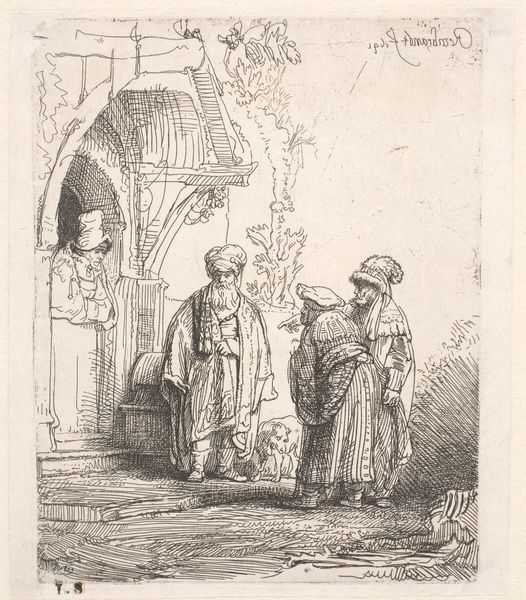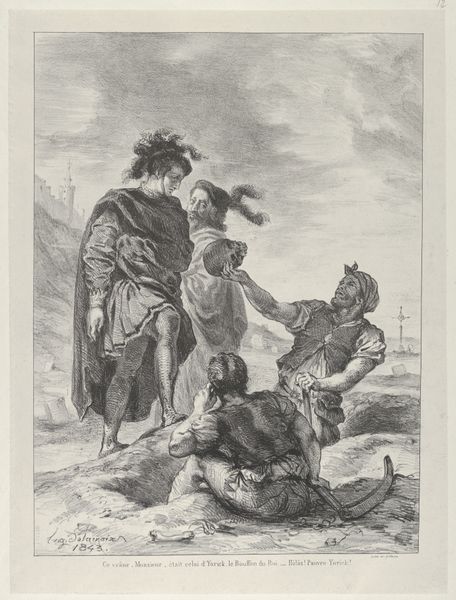
Dimensions: 204 × 269 mm (image); 273 × 358 mm (sheet)
Copyright: Public Domain
Curator: Looking at this lithograph by Honoré Daumier, created in 1857, titled "Quien...ces Parisiennes qui s'moquiont de nous," currently residing here at the Art Institute of Chicago, my immediate reaction is one of pointed amusement. The figures possess a rather intense, almost unsettling gaze. Editor: I see exactly what you mean. There’s a biting critique embedded in those eyes, a sort of weariness mixed with disdain that I find incredibly compelling. You can tell by the way their brows are furrowed and mouths are turned down—it suggests so much unspoken social commentary. Curator: Precisely. Daumier, known for his satirical lithographs, frequently commented on the socio-political climate of 19th-century France, right? So in this case we must think how those symbols might be read. The caricatured features, the posture—it all coalesces to deliver a very strong emotional message about class resentment and the pretentions of Parisian society. What underlying memories might people project when regarding an image such as this? Editor: It’s fascinating how the "genre-painting" element plays with Realism, offering a slice of everyday life, but one heavily filtered through Daumier's sharp observation. Consider how prints like this circulated in newspapers, amplifying their effect, and reaching broader publics beyond the typical museum or gallery visitor. This gave him an extraordinary socio-political voice during a time when those outlets were being more strictly defined by the authorities. Curator: That's an excellent point. Lithographs as a medium allowed for wide distribution and immediate engagement with contemporary issues. It's more than just documentation; it's almost a mirror reflecting the anxieties and social tensions of the time. What memories of injustice did audiences hold dear? What memories of status might audiences feel challenged? Editor: And let’s not overlook the "portrait" aspect. Daumier isn't simply depicting types; he is trying to grasp individual expressions to convey something about humanity as a whole, isn’t he? The artist offers these observations and commentary on the elite through what he captures on his observation and perspective of the general populous and in that moment of history. He almost invites you to participate in the spectacle. Curator: You've articulated that perfectly. It becomes clear when viewed together with his total oeuvre, we discover Daumier as less the social recorder but more as social and political participant himself—agitating in a certain way for consideration of an uneven landscape of culture. Editor: It's quite something how Daumier distills complex societal dynamics into seemingly simple images. We have had an interesting insight today into the art in both the image, and in history itself.
Comments
No comments
Be the first to comment and join the conversation on the ultimate creative platform.
